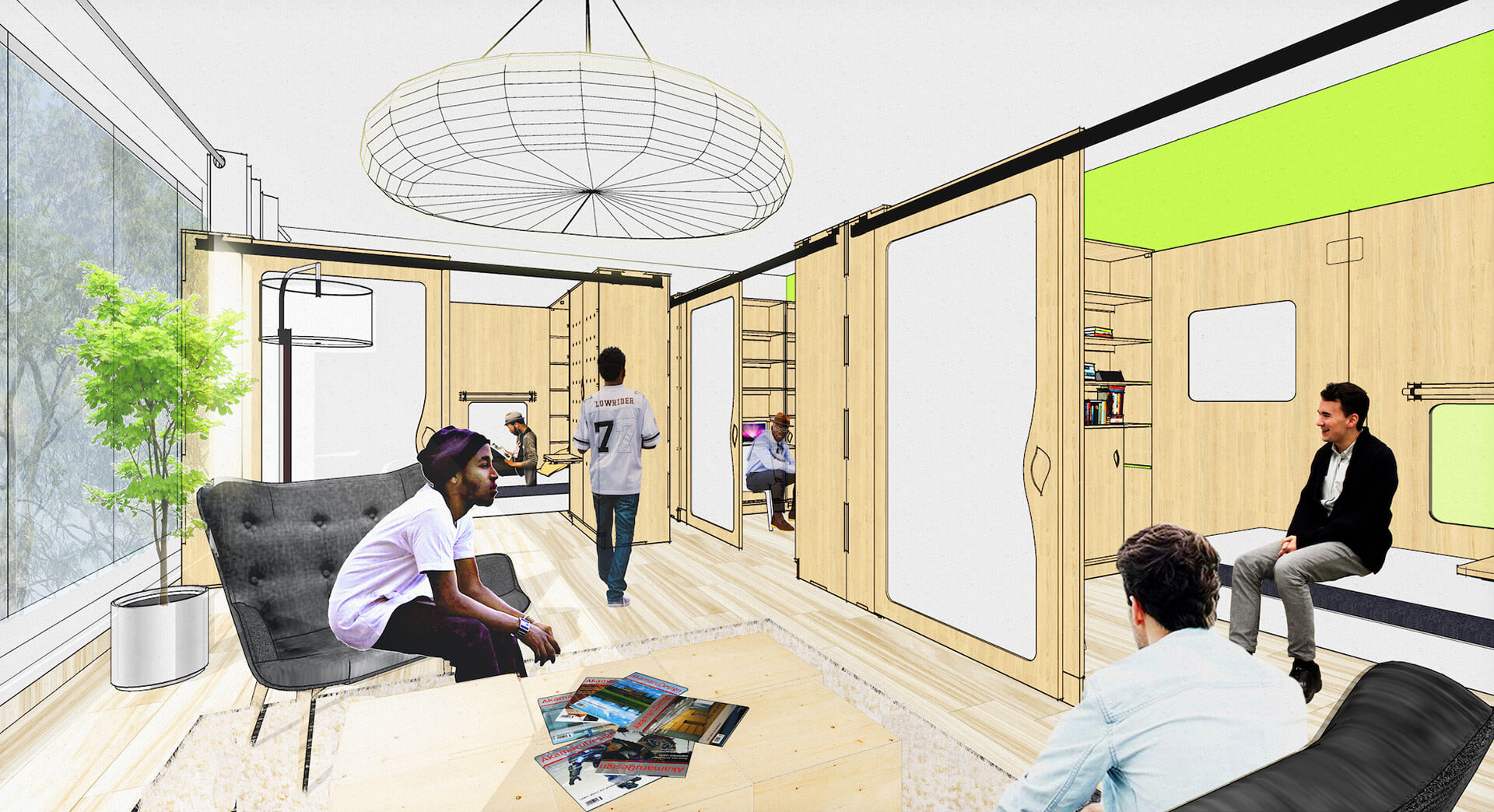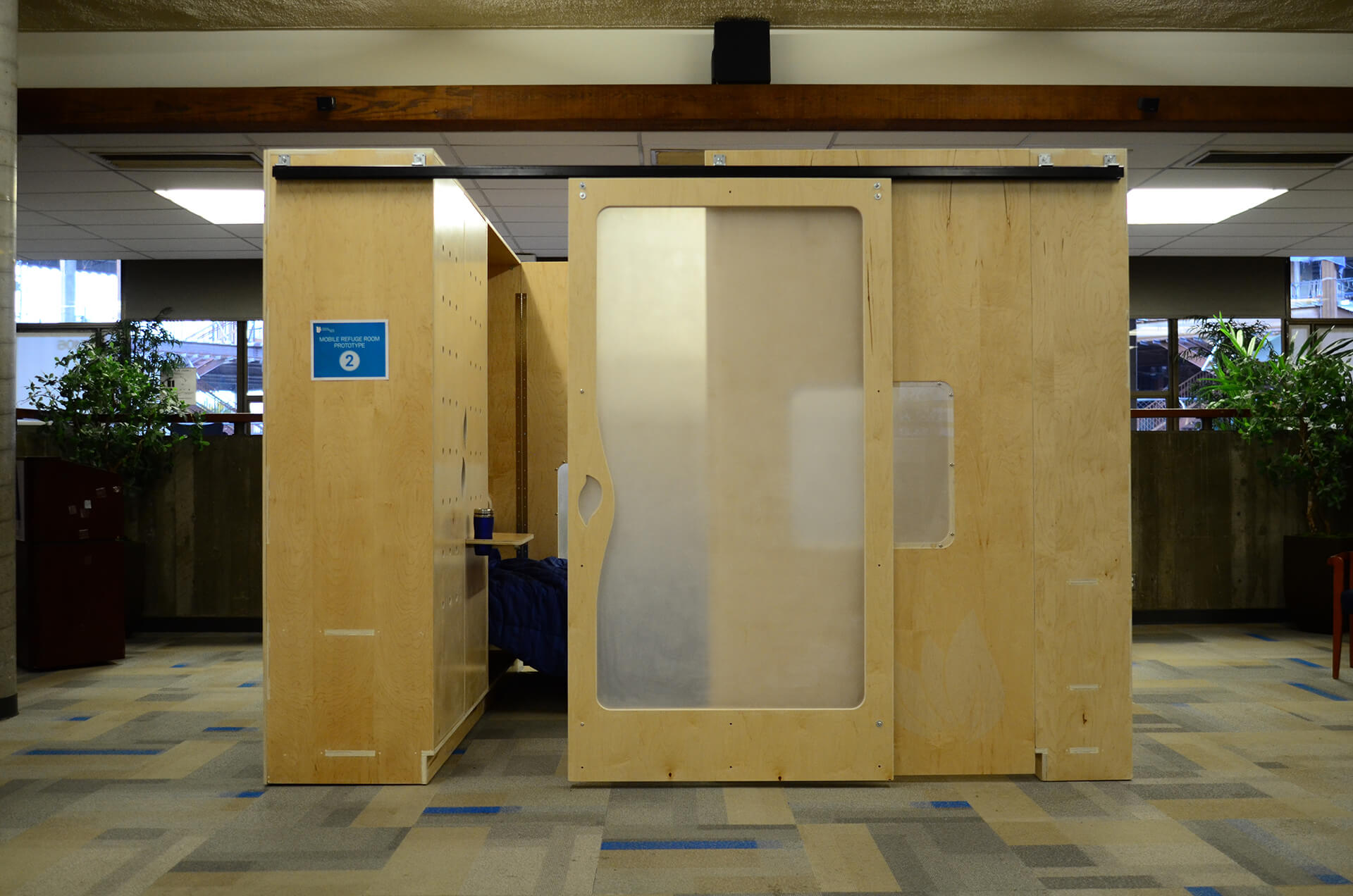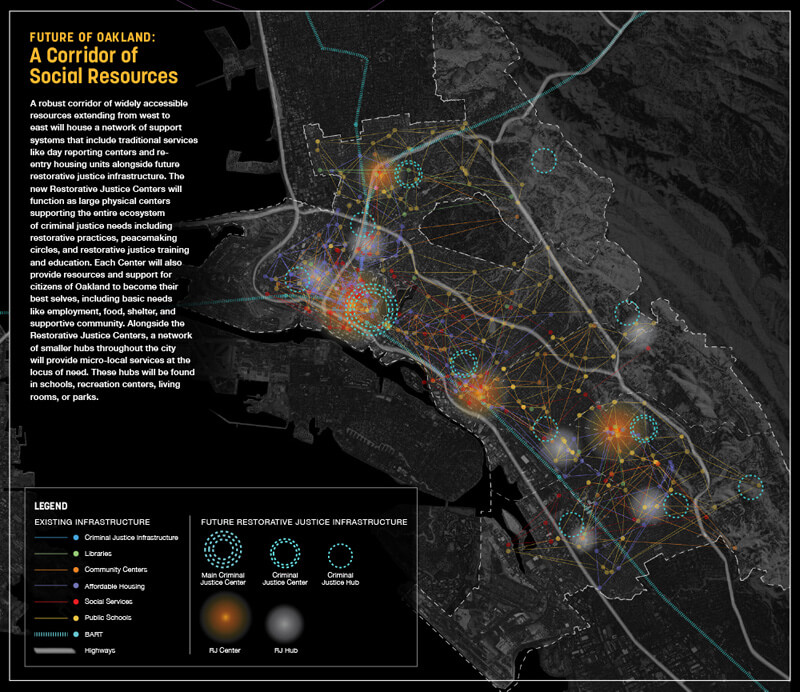Deanna Van Buren:
an unexpected opportunity
Deanna Van Buren, LF ’13, is the executive director of Designing Justice Designing Spaces, based in Oakland, California. This real estate and architecture development nonprofit builds infrastructure to address the root causes of mass incarceration with the aim of ending it entirely. Deanna’s work spans the areas of poverty, racism, unequal access to resources, and the criminal justice system.
The challenges of this time are weighing heavy on my heart, but I hope I can present some optimism. Last year, Architect Magazine published my op-ed “We Must Plan for a Decarceration Nation,” where I wrote that we have to plan for and build for mass decarceration. And we haven’t done it.
At DJDS, one type of project we focus on is restorative reinvestment in communities, for example, Restore Oakland, which opened last year as the country’s first center for restorative justice and restorative economics. We’re also working on restorative re-entry infrastructure for folks coming home from prison, like re-entry campuses, furniture, and rooms. A third bucket is repurposing and reimagining existing criminal justice infrastructure that’s becoming defunct, and we’re collaborating with the LA mayor’s office to repurpose their city jail as a center for equity.
Unfortunately, I was right about the need to build for mass decarceration because in the age of COVID, we are seeing it happen. I never thought we would see jails decarcerating down to 50 percent of their existing population, thousands and thousands of people released. Some are being released and tested; some are not. We don’t know where they’re going–many into homeless shelters–but there is no infrastructure to provide them with housing, behavioral healthcare, jobs, drug and alcohol treatment, a lot of the things that folks need. So, it’s wonderful it’s happening, it’s what we want to see, but to see it happen at this rate and without necessary preparation has been challenging.
We are a small firm of 10. The good news is we have been addressing all of these issues, so the pivot for us isn’t a new set of projects but supercharging the ones we already have in motion. Here are three examples.

First we have had to quickly ramp up our mobile refuge rooms project. Folks coming out of prison are usually crammed 10 or more in one room; it’s unsafe, it’s undignified, and there’s no privacy, so we designed a pop-up model we field tested, and we were building 15 of them for our local county. These are not ICU beds; they’re perfect for people who are asymptomatic but need to be quarantined and watched over. We can put this series of small rooms into existing infrastructure–schools or anywhere there’s a large space. Now we need to make hundreds, deal with intellectual property, legal support, insurance, and finding factories to produce these in mass. We’re grateful that we had gotten this started but getting those units fabricated and out has been pretty intense.

Going from small to medium to large, the second project is our Unbuilding Jails Coalition, a project we’d been planning with the Vera Institute. You may or may not know there’s actually a jail building coalition: these are architects and contractors, etc., that talk to municipalities around the country, often rural communities, and convince them that the solution to their problems is more jails. So we decided to create an Unbuilding Jails Coalition where we do the opposite. We’ve included a policy shop, planning and real estate, and architecture and design, but we need to pilot, immediately, because what we don’t want is the backslide. Now we’re decarcerating, but it’s very easy after we get through the pandemic for the jails and prisons to just fill up again. We’re already seeing some dodgy stuff where people are trying to put homeless folks inside or just move populations around to keep them where they’re at.
We have a shortlist of pilot sites all over the country, and our target is a municipality where we’ll be able to shut the jail down altogether. At DJDS our goal is complete abolition, so we’re always going for zero jail population, not just a reduced one. And this is the exciting time to do it–we have to do it now; we may never get a chance like this again. We’re moving rapidly from planning into piloting, the closure of a jail, the repurposing of that facility, and then restorative reinvestments in the communities most impacted–that’s what that process will look like.

The last example is our ATI initiative. This is the Alternative to Incarceration Initiative in LA County, the most exciting effort I have seen nationally. There, community organizers stopped the building of two mental health jails that had secured a $3 billion bond measure, and instead created an alternative to incarceration plan for a distributed network of care across the county. We went before the county supervisors, who approved the building of this infrastructure on March 10, right before everything shut down. That project is moving forward and we’re developing infrastructure that can manage COVID response and long term needs. In everything we’re doing, we’re thinking about right now but keeping the long game in mind. For ATI we are mapping existing resources and infrastructure, trying to trace thousands of folks post-release, determining future infrastructure, and digitizing all our tools for community engagement.
We are implementing hundreds of recommendations that the Alternative to Incarceration Working Group provided the county to build comprehensive infrastructure with no jail at all, which has always been our goal. To see the potential and to participate in it and see it happening–it’s very exciting, and it’s a tremendous weight on our organization to pivot quickly so that we don’t see a reverse.